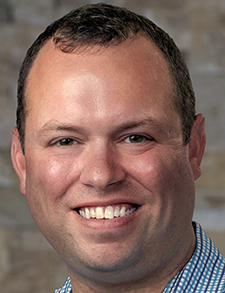PHM 2024 Session Recap
In this interactive workshop, the presenters, Ruchi Doshi, MD, Colby Feeney, MD, Kelly Grannan, MD, Christy Mulligan, MD, Rachel Peterson, MD, and Jesse Rhodes, MD, (who were all trained in med-peds) very skillfully discussed strategies for the successful transition of patients with chronic childhood-onset conditions (CCOD) in the inpatient setting. While the process of transition is often described in the outpatient setting, this patient population commonly requires frequent hospitalizations, and inpatient providers can provide a valuable resource to facilitate the process. The speakers represented multiple institutions and described the differing approaches that fit into their individual healthcare systems to care best for these patients as they transition from a pediatric to an adult care model.
To start, the group introduced the McKinsey 7S Framework, a change-management model often associated with the business world. This model reviews the “7 Ss” that could be used toward building change within a system. The presenters effectively discussed how it can be used to develop an inpatient transition service. The framework reviews six elements (Strategy, Structure, Systems, Skills, Staff, And Style) that all contribute to the seventh element of Shared Value. Through a series of breakout sessions and report-outs, the group discussed this approach and how it could be used to navigate their healthcare systems to achieve one shared value: providing the best inpatient medical care we can for patients with CCOD and helping them transition successfully into adult healthcare systems.
As noted above, the presenters reviewed multiple approaches to inpatient transition models. They each reflected upon what successes and challenges they encountered at their own hospitals. The three specific approaches discussed with examples of each included:
Service line or rounding model: In this model, a clinical team specializing in transitions is the primary service for the care of patients with CCOD. The example provided was developed in a “hospital within a hospital” setting, housing both pediatric and adult care units. The presenters found success in aligning their goals with the hospital and using a quality-improvement approach with measurable outcomes. They studied their program and demonstrated improvement in readmission rates, value of care, and trust between patient and provider. They did discuss that this approach may require increased resources and that grant funding helped contribute to its success. This model may fit hospitals that have a sizable population of CCOD patients where a dedicated service may assist in care coordination and management.
Consult service model: This approach uses dedicated staff as consultants to help guide the transitions of CCOD patients. One example of this model was at a free-standing pediatric hospital with a consult service staffed by med-peds and medicine-trained physicians. This example did not seem to rely on as many resources, and the presenters found success without additional dedicated support staff. This model may work well in hospitals where additional expertise is needed but that may not have the staffing, resources, or number of patients to support a dedicated service.
Hybrid service or consult model: This model discussed combining elements of the other two methods to meet the needs of the patient population and the institution.
Overall, one of the major achievements of this workshop was that it provided multiple different strategies for developing a transition program. The presenters acknowledged that a “one size fits all” method will not work at many institutions and that it’s important to analyze the needs and resources of your hospital to determine the best way to move forward. This approach kept all attendees engaged and really helped us reflect upon what may be most successful at our hospitals when we return home.
It was inspirational to see how so many practitioners had been the drivers of change in their own institutions to support this patient population. Many of the presenters are also working to help guide clinicians on a larger scale with their work within professional organizations such as SHM and the American Academy of Pediatrics, as well as with the development of a new collaborative effort, pediatric to adult transitional care in the hospital, or PATCH. This effort, started by med-peds hospitalists, aims to provide valuable resources and input to share best practices as additional transition programs are developed.
Key Takeaways:
- Inpatient transition programs can successfully assist patients with CCOD as they enter adult healthcare systems.
- Multiple approaches have been effective in developing a transition program including a dedicated inpatient service, consult service, or hybrid model based on the needs of the patient population and the institution.
- Using a change management model such as the McKinsey 7S Framework can help assess resources and align values to drive successful change.

Dr. Fish
Dr. Fish is a med-peds hospitalist and the program director of the pediatric hospital medicine fellowship at Baystate Medical Center in Springfield, Mass.
